Frederik Dawson
Portovenere, Cinque Terre, and the Islands
Portovenere, Cinque Terre, and the Islands (Inscribed)
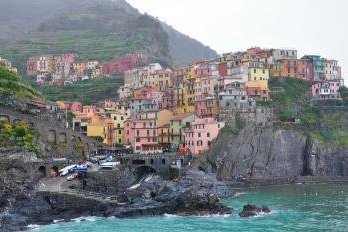
After Genoa, I continued my travel along the beautiful Italian Riviera to Cinque Terre or Five Lands, the area of breathtaking landscape of five villages of Monterossa, Vernazza, Corniglia, Manarola and Riomaggiore which dramatically built on the rugged and steep coastline. The beauty of Cinque Terre was truly deserved its well reputation, all five villages were extremely pretty with small colorful houses with lovely vineyard and green mountain as their background while facing the greenish blue sea, maybe one of the most beautiful places in Italy in my opinion.
I used train for transportation in this area as it seemed to be the most convenient and cheapest with special one day pass. Travel by train was a very nice experience to see Cinque Terre as most of the rail line built along the beautiful coastline and it’s really unique that most of the villages could only be reached via pedestrian tunnels from the tiny train stations. The tunnel of Riomaggiore made me feel like walking in the aquarium. Each village has its own characteristic, but for me Manarola is the prettiest and very photogenic especially when you walk from Corniglia and see Manarola for the first time.
Cinque Terre was also famous for seafood and wine, and I had to admit that I really enjoyed its wine more than the gorgeous landscape! Another highlight of Cinque Terre is to walk on the famous “Via dell Amore” or the way of love, a lovely coastal part between Manarola and …
Keep reading 0 comments
it was nice to be there.all the stone and its message is amasing. the site is vere closer to the main road. eventhough it is on of among the world heritage, it's future existance is questionable. the is no facilities for turists or visitors. the whole site is run by only three person. as a studend of cultural related things i felt unhappy about the existing situation. as a resonssible generation we are expected alot to preserve and forwarded it to the future or coming generation
Keep reading 0 comments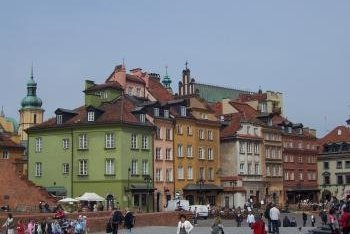
I was really impressed by Warsaw. I had heard some pretty mediocre reports about the city from others that had visited, however I really enjoyed the two days I spent there at the start of my little jaunt.
The World Heritage Site itself is the reconstructed old town, and whilst it may not be as glorious as some of the other Central European cities on the list, it has an incredible story of rebuilding after near total destruction. It was actually a little bigger than I was expecting it to be, and the sgraffito wall decorations were some of the finest examples I have seen. It is pretty evident that this site has been rebuilt, however I think this is quite good as it enables people to ‘read’ the restoration, instead of just trying to pass it off as being more authentic. I kept on returning for strolls down different streets and think I probably walk down every one with-in the WHS.
Aside from the old town I really liked Warsaw, admittedly the Central station is a little grim looking but there are plenty of other worthwhile places to visit; most strikingly the Palace of Science and Culture, but we also had great fun venturing off to more remote parts of the centre to see the monuments and museum relating to the history of the city in the Second World War. Perhaps my favourite thing though was the relaxed atmosphere we found, from queuing in Milk Bars to bar hopping …
Keep reading 0 comments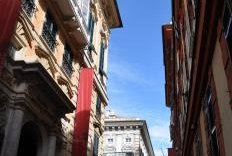
Located on the shore of Mediterranean Sea, Genoa or Genova is famously known for its maritime heritages under its former glory, the Most Serene Republic of Genoa, and today the capital of Liguria and the biggest port of Italy as well as part of industrial hub together with Turin and Milan, and incredibly one of biggest well-preserved medieval city in Europe. I entered Genoa with no expectation, after I took the new metro line from the train station to the city center of Piazza De Ferrari, the first image of Genoa was really surprised me with the wide square of grand buildings and many cute red and green fountains, a mini Trafalgar square I would described, also the nearby Palazzo Ducale and the cathedral were also the same league of magnificent.
I continued my tour to the Via Garibaldi, which is a part of Strada Nuova, a grand road that built to make a new city area in 1550 and now a UNESCO World Heritage Site. At first I saw the road, I really disappointed to see that the road was not a wide nice boulevard of stately mansions but a narrow lane and quite dark since the whole road had buildings blocking the sun, not a good place to stay in my opinion, but if compared with the medieval part of Genoa with full of complicated alleys, the road was really wide. Both sides of the road were cramped with palaces of Genoa's noble families …
Keep reading 0 comments
Undoubtedly my most powerful memory of Bukhara is sitting at the square, gazing at the Kalan minaret. It is so perfectly shaped. The adjoining mosque is another masterpiece. The same can be said of the little Ismail Samani mausoleum, dating from the 9th-10th century, and the four turrets of the Chor Minar.
Bukhara is a great destination: compared to the other Uzbek sites it is more lively than Samarkand and less museum-like than Khiva. It has a lot on offer from different periods and merits a visit of at least 3 days. In the evenings you can relax, eat and drink on one of the terraces around the Lab-i Hauz pond. This area especially has become touristy, as have the bazaars. Although Uzbekistan cannot be considered a major tourist destination, enough of them come here to provide a living for the many restaurants, hotels and souvenir sellers in town.
Part of the WHS is also the 16th-century women's hammam. It was my first visit to a hammam ever and a memorable experience. Imagine sweating away in a 500-year-old monument that has been used by many many women in this period. At first, I was still in my "visiting a monument"-mode, just admiring the heated cells covered all over with large dark gray stones. The image then was completed by the arrival of several very fat naked Uzbek women, scrubbing each other or lying on the cold floors pouring buckets of water on themselves. It is rare that one …
Keep reading 0 comments
Shakhrisyabz originally was not included in my group tour of Uzbekistan, but of course, I found my way there. I hired a taxi that took me to Timur's birth city in about 2 hours. It's a fine drive along with papaver fields and across a mountain pass. Locals sell the ubiquitous Uzbek bread and rhubarb by the roadside. The city itself is worthwhile not only for "completing" Uzbekistan's 4 WHS and the main Timur sites, but it also presents them at a much more human scale than Soviet-style Samarkand.
Shakhrisyabz is quite small and the monuments are scattered along its main street. I started at the Aq Saray palace, the most iconic place in town. Behind a grand statue of Timur lie the remains of his former summer palace. Its two towers, the only large structures left, are enormous. Their blue glazed tiling looks weathered, but that also adds to the original/non-restored feel of the site. In front of it, some floor mosaics have been uncovered.
At the center of the town, amidst modern structures, are a caravanserai and bazaar that also originate from Timurid times.
The main road then culminates into the complex of the Kok-Gumbaz mosque and Dorut Tilyovat. The interior walls here are not covered by mosaics but by frescoes. They are in quite a bad state, the paint is peeling and parts of it look like reproduction wallpaper. The motifs have a different colour scheme from what I had seen at Samarkand: here …
Keep reading 0 comments
Samarkand is the site of the iconic Registan - the "sandy place" surrounded on three sides by Timurid madrasahs. You can sit on a bench on the fourth, open, side and take it all in - the turquoise tiles, the slender minarets, the imposing facades. The place attracts a lot of Uzbek tourists too. The madressahs can best be admired from the outside, as their interiors are completely taken over by the souvenir business. Only the middle (Tilya Kori) is worth a visit for its completely gilded interior including golden mosaics.
Somehow it had escaped my attention before that Samarkand has several other grand monuments than this Registan. Probably the best sight of my whole Uzbek/Turkmen tour was Shah-i-Zinda. This is a mausoleum complex, where the tombs are housed in the most ornamental little buildings. They feature all the mosaics and glazed tiles Samarkand is famous for, but on a more touchable scale than at the Registan. The place is also full of Uzbek pilgrims and daytrippers, creating a lively atmosphere (imagine visiting this wonderful site on your way from grocery shopping - I saw many Uzbeks carrying their round loaves of bread with them).
The tomb of Timur (Gur Emir Mausoleum) is the third site worth mentioning. On the inside, it has the feel of a European cathedral, with the tombs in the middle under a cupola and older Uzbeks praying around it.
Keep reading 0 comments
At first sight, the Itchan Khala of Khiva is a deception: an almost empty open-air museum, except for numerous French tour groups with loud guides. Where have I landed? Is this the once so remote oasis town? The monumental walls, gates, and other historic buildings in town look over-restored as well.
Fortunately, I stayed here for two nights, and it certainly grew on me. My hotel (the Arkonchi) is located within the walled section, making it easy to wander around during all hours of the day. Although only early May, the temperatures easily reached 35 degrees Celsius during the day. So the best exploring was in the early mornings and evenings. The rest of the day I spent hanging around in one of Uzbekistan's best features: the chaikhanas (tea houses).
Almost every building in town is some sort of museum or shop (or combination of these two). I just entered them all - sometimes I was disappointed because of the overly commercial atmosphere, but I was pleasantly surprised too a number of times. Highlights certainly not to be missed are the Pahlavan Mahmud Mausoleum (tiled all over and very serene), the Djuma mosque with its 112 wooden columns and the Tosh Kovli Palace.
Keep reading 0 comments
Merv is such an extensive site that I don't know how I would have visited it on my own. Probably hire a taxi and be transported from location to location. The thing about Merv is that it holds the archeological remains of 5 cities, built next to each other during different periods in time. There's a small museum near the entrance where a model of the total area can be seen, and how the different cities are positioned.
The first real sight in the park is the Mausoleum of Sultan Sanjar. It has been almost completely restored with the help of Turkish funds. This is the building that you will see in the distance over and over again from different corners of Merv park.
The next stop is at the "Forbidden City". These are just the remains of walls. We can go on / in it, without being limited to certain paths. Our obligatory Turkmen guide only is a bit worried about stray dogs (we didn't see any). On the ground lie lots of bits of coloured tiles. The Turkmen authorities haven't even begun proper excavations here.
The Erk-Kala is the oldest city ruin. Nowadays it is 'just' a large hill (somewhat like a tell?) on which you can climb and look out over the adjoining little oasis.
At Gyaur-Kala only some walls remain. Our attention here is mainly drawn by the resident camels that are roaming around in this part of the park.
Finally, …
Keep reading 0 comments
Although Nisa is situated quite close to the Turkmen capital Ashgabat, it took the best part of the day to get there. The group first had to visit the Türkmenbashi mausoleum next to the biggest mosque in Central Asia, the second biggest mosque in Central Asia (built by Mr. T. after a visit to Mecca), the ancient battlefield of Geok Tepe and a horse farm. Without lunch, we ended up at the gate of Old Nisa around 13.30 - the only excursion of the day that I had looked forward to.
The best preparation for this visit I already had experienced the day before, when I went to the National Museum in Ashgabat. This is a very worthwhile museum in general, quite modern and with displays in English. Exhibits from Merv and Nisa feature prominently. The iconic representations of the Parthian culture from Nisa are its ivory rhytons: drink containers the size of an elephant's tusk. The museum holds a fair number of them, all with fine decorations.
The archeological site of Old Nisa itself is a rather small complex. It is strategically positioned with its back to the mountains, overlooking a flat valley. Walls and columns are mainly reconstructed, the only original parts are the outline (labyrinth-like) and some pieces half-hidden underground. A good overview of the site can be had from the viewing platform at the entrance, said to have been built for a visit by former French president Mitterand. It's not a spectacular site to …
Keep reading 0 comments
Before I visited Brasilia,
I knew next to nothing about it.
I just knew it was the new capital of Brazil
Built somewhere in the middle of the country.
That its plan and architecture was eclectic...
But no more than that.
I had never heard of Juscelino Kubitschek,
The "bossa nova" president
Under whose tutelage the city was established;
Nor of Lucio Costa, the brilliant city planner,
Nor of the heroic artists, nor of the tireless workers.
Yes, Oscar Niemeyer I'd heard mentioned
But I had no knowledge really of what greatness
He's accomplished; not even that he's Brazilian!
...I accepted an invitation suddenly from out of the blue,
An invitation to visit Brasilia.
And now I know about Brasilia,
Not nearly enough but enough to know
That it's a place where you feel alive! Impassioned!
By its innovative ways, its buildings of epic grandeur;
By the ebullient energy and humanistic spirit
Of the beautiful brasilienses: gracious, delightful, spontaneous!
The sky is sapphire blue in Brasilia, the earth carnelian red;
Bold buildings soar in the brightest of whites!
Not shy pastels, but primary colors, making a statement!
The shapes, the curves, the four-leaf clover roads, the bridges of fantasy,
The pyramidal, the concave and convex, the rounded U.F.O.-like buildings,
The Cathedral like hands in prayer holding the miracle within.
I know about Brasilia now.
I know where it gleams like a dream of a mythical city.
I can tell you how to get there.
You'll be glad you came.
Keep reading 0 comments
Kunya-Urgench (Old Urgench) in my opinion is the most impressive of the Turkmen WHS. It's a flat, deserted, hot stretch of land dotted with monuments here and there. The wonderful minaret (the oldest of its kind remaining in the world, and one of the highest buildings from its period) draws your attention right away. The adjoining Tekesh Mausoleum is now under construction, but its turquoise conical dome is still visible.
Visiting the site is well organized: there's a footpath that links the monuments. Some of them can be visited inside too, but often they have been taken over by groups of pigeons. Worth mentioning is the Torebeg Khanum mausoleum which has a wealth in mosaics. Those under the dome are put together like a calendar.
What I liked about the atmosphere here is that it still is a local pilgrimage site. You can see stones placed on top of each other for good luck. There's also a spot where little cribs are left by women who pray to become pregnant.
The site is also still littered with graves. This is said to prevent authorities from excavating here. There must be so much more left underground of this once powerful city!
Keep reading 0 comments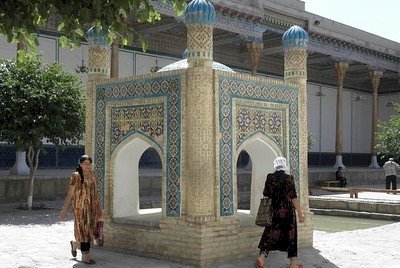
Uzbekistan has selected 18 locations to be part of the international Silk Road nomination. They include archaeological sites of trade centers, buddhist temples, a citadel, a caravanserai, stupa's, mausolea, minarets and medressahs all over Uzbekistan. They do not double the current Uzbek WHS of Samarkand, Bukhara and Khiva by the way (though all of Silk Road fame).
On my recent trip to Uzbekistan, I visited 2 sites out of these 18: Chor-Bakr and the Bahoutdin Complex. Both are located a few km's outside of Bukhara.
Chor-Bakr is a 16th century necropolis, containing the family tombs of Abu-Bakr-Said (related to the Prophet Muhammad). From the 19th century on the site was developed further by adding a mosque, a khonaqo and a pretty little minaret. At my arrival at 9.30 I found the place deserted, except for a couple of parading peacocks. The complex anno 2010 has come a long way from this quote from my 1996 LP Central Asia ".. there's little sign of recent restoration". Chor-Bakr now looks as polished as all monuments in Bukhara. They even already have a Unesco sign! It is definitely a worthwhile site to visit though, very large, intact (or restored to look like that).
The Bahoutdin Complex is a much more lively site. This is an important Sufi shrine that attracts lots of locals. It houses the tomb of Bahoutdin Naqshaband, the 14th century founder of one of Central Asia's most influential Sufi orders. The complex around the marble tomb of …
Keep reading 0 comments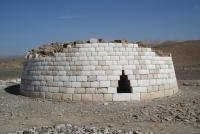
My first impression of this site is of a modern city set out in a grid pattern divided by six lane dual carriageway boulevards. Although there are numerous multi-storey buildings, there are none on the scale of Dubai or Abu Dhabi city.
But on closer inspection it is not difficult to find places of local heritage. The ancient Hafeet tombs can be found in several locations around the city, besides the slopes of Jebel Hafeet. I found some small circular stone tombs on a hillside near the Al Ain zoo which are particularly well preserved and accessible. Other larger ones were visible at Bida Bint Saud, near Hili and on the edge of the red sand dunes. I have seen other more elaborate types of tomb in the Hili Archaeological Park.
Jebel Hafeet, a gigantic monolith that sits on the desert floor straddling the UAE/Oman border to the south of the city, reminds me of a rougher version Ayers Rock/Uluru in central Australia. This mountain has lost some of its integrity however due to the presence of a huge palace, a resort hotel and a restaurant.
The present day city is located on the site of six wells/oases, the largest of which is Al Ain in the city centre, while others like Al Muraibi, Al Murabba, Al Jimi and Al Quattarah are in the suburbs. Each has its mud-brick walled date plantations and aflaj irrigation systems. They are each protected by watchtowers and a fort, most of which have recently …
Keep reading 0 comments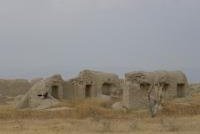
The road between Mary and Ashgabat is possibly the most boring stretch that I have ever travelled on. My fellow travellers made a joke out of it - "Is this on your List too? It should be." It took us over 7 hours to reach the Turkmen capital. Our minibus could only reach an average speed of 50km per hour because of the many holes and bumps in the road.
An hour before we arrived in Ashgabat we had a final stop to stretch our legs. It was at a place called Abiwerd just near the road. I took some obligatory photos, just in case this tiny archeological site would ever show up on a WH or Tentative List.
My surprise couldn't have been bigger when I came home and discovered that Turkmenistan had just entered a new Tentative Site called "Silk Roads Sites in Turkmenistan". And what is part of it? Abiverd!
Abiverd or Abiwerd is an ancient fortified settlement. The remains near the road are merely silhouettes of ancient structures, although a local boy came to us to point out a fortress a bit further inland.
Keep reading 0 comments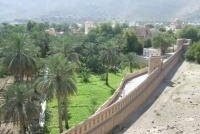
Of all the aflaj in Oman and the UAE, only one that I saw in 2010 is included in this WHS. That is the falaj al Muyassar that flows through Rustaq, and beneath the fort (on WH tentative list). The portion I have seen flows through a date plantation, then beneath the fort, and in an open channel out into Rustaq village. It then continues in an open channel through the village.
In 2011, while staying in Nizwa I visited several others, at Falaj Daris, at a spot where steps are provided for washing prior to attending mosque. The Falaj Al-Khatmeen was easily located at Birkat Al Mawz in a date plantation adjacent to the fort. Less easy to find was Falaj Al-Malki, located in what is now a new housing estate. It was not in a very clean state either.
Keep reading 0 comments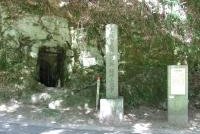
To reach the main part of the Iwami Ginza silver mine I took a bus to Omori Ginzan from Odashi station. The walk up to the Ryugenji shaft was interspersed with interesing buildings related to the operation of the mine. The Ryugenji shaft has been enlarged and illuminated to accommodate visitors, but what amazed me were the other shafts visible in the bush, but closed off with steel barriers. These were tiny by comparison, and the miners had to crawl through these with candles for illumination, and chip away at the silver ore.
Another part of this WHS that I visited was Yunotsu, a port from which the silver was exported to Korea and other parts of the world. Today it is a sleepy fishing village, and still contains many old wooden houses, inns and commercial buildings. It is just a short walk from Yunotsu station.
Keep reading 0 comments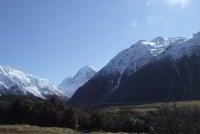
I was enraptured when I read the reviews already on this page.
In April I made the 1000 km journey to the bottom of the South Island. This is the real New Zealand, far removed from the city life that I endure in Auckland.
Most people travel to these remote areas by car, but if you are travelling alone, or feel that is too un-green, be assured that I toured the whole area from and back to Christchurch by local bus and train services. Because of the tortuous nature of the roads there I would recommend this as it allows you watch the scenery instead of the road.
From Christchurch there are direct bus services to Te Anau, Queenstown, Mount Cook and Greymouth, as well as the scenic rail link to Greymouth that I used.
From Te Anau there are several services to Milford which connect there with boat trips up the Sound.
From Queenstown there are bus services to Te Anau (for Fiordland), to Glenorchy and Wanaka (for Mount Aspiring), to Fox and Franz Joseph Glaciers (for Westland) and onwards to Greymouth.
For the more energetic there are walks on the Milford and Routeburn tracks that lead through the Fiordland and Mount Aspiring National Parks respectively.
Keep reading 0 comments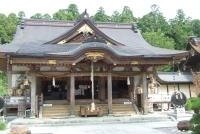
I started my visit to this site at Shingu and visited the three shrines in this area. The Hayatama shrine, set in a wooded area on the edge of Shingu town comprised several scarlet painted wooden buildings with tile roofs. The Hongu shrine was a 90 minute bus ride from Shingu passing several spa resorts along the way. The buildings at this shrine were of natural timber with gold trimmings and with steep thatched roofs. The Nachi shrine and Sagantoji temple was a much larger collection of buildings, both natural and painted spread over a hillside. There is also an elegant scarlet painted pagoda. Buses to this shrine leave from Nachi station, a few stops along the line from Shingu. Many steps lead from the bus stop up to the shrine.
Next I moved on to the Koyasan area and first visited the Jison-in temple in Kudoyama. This temple marks the starting point of the Koyasan Pilgrimage Route, with its 180 stone markers showing the route to the summit. This temple was the resting place for women, as only men were permitted to ascend Koyasan. Today the temple is dedicated to women.
I then ascended Koyasan using the train and cable car and toured the sites at the summit using the local buses. I went first to the Okuno-in and walked through a huge graveyard with interestingly designed tombs and reached the Torodo and Gobyo mausoleums. I also visited the Kangobuji temple and the ancient Danjo Karan shrine with its …
Keep reading 0 comments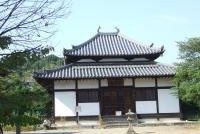
This WHS comprises two temples, the Horyuji and the Hokkiji. I reached the Horyuji temple by bus from Horyuji station. I found this temple huge, shadeless and unattractive.
After a lengthy walk I came to the Hokkiji temple, which by contrast is small and full of trees and shade. I caught a bus #97 from Hokkiji directly back to Nara station.
Keep reading 0 comments